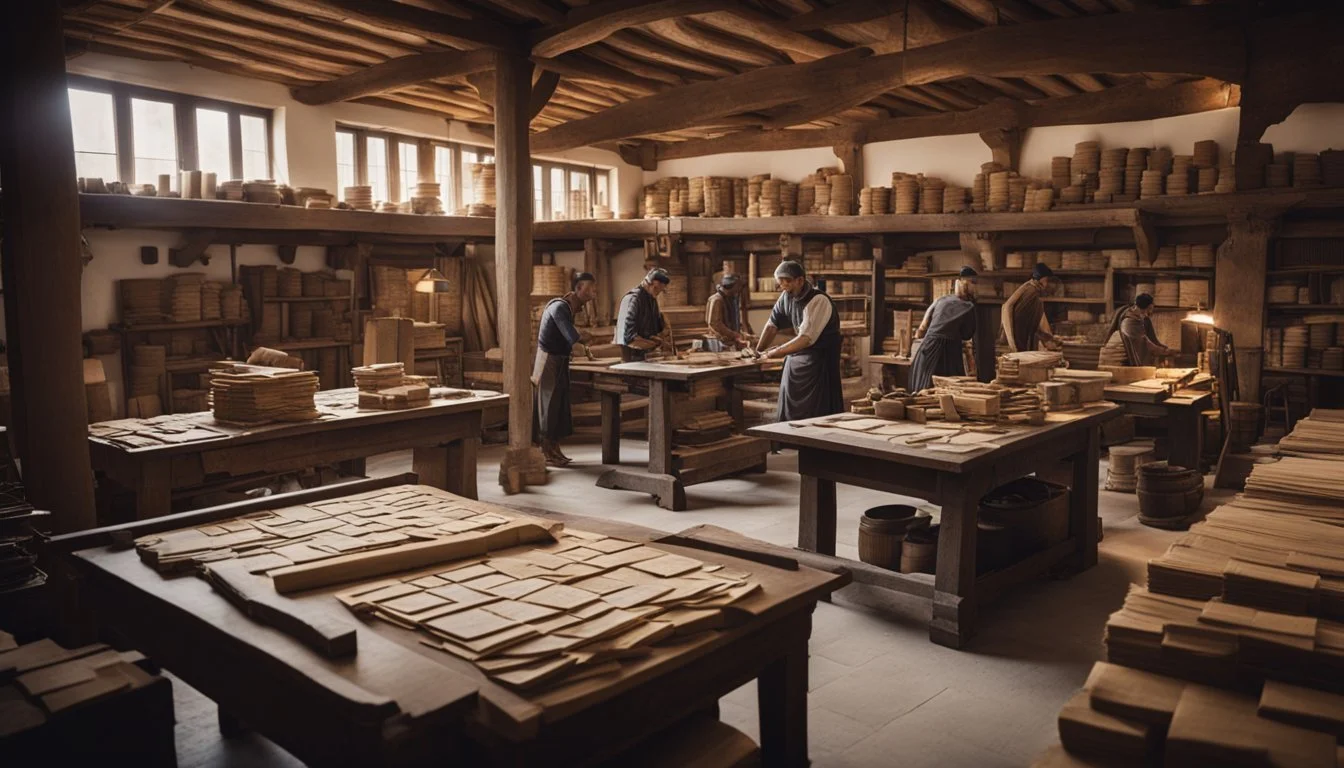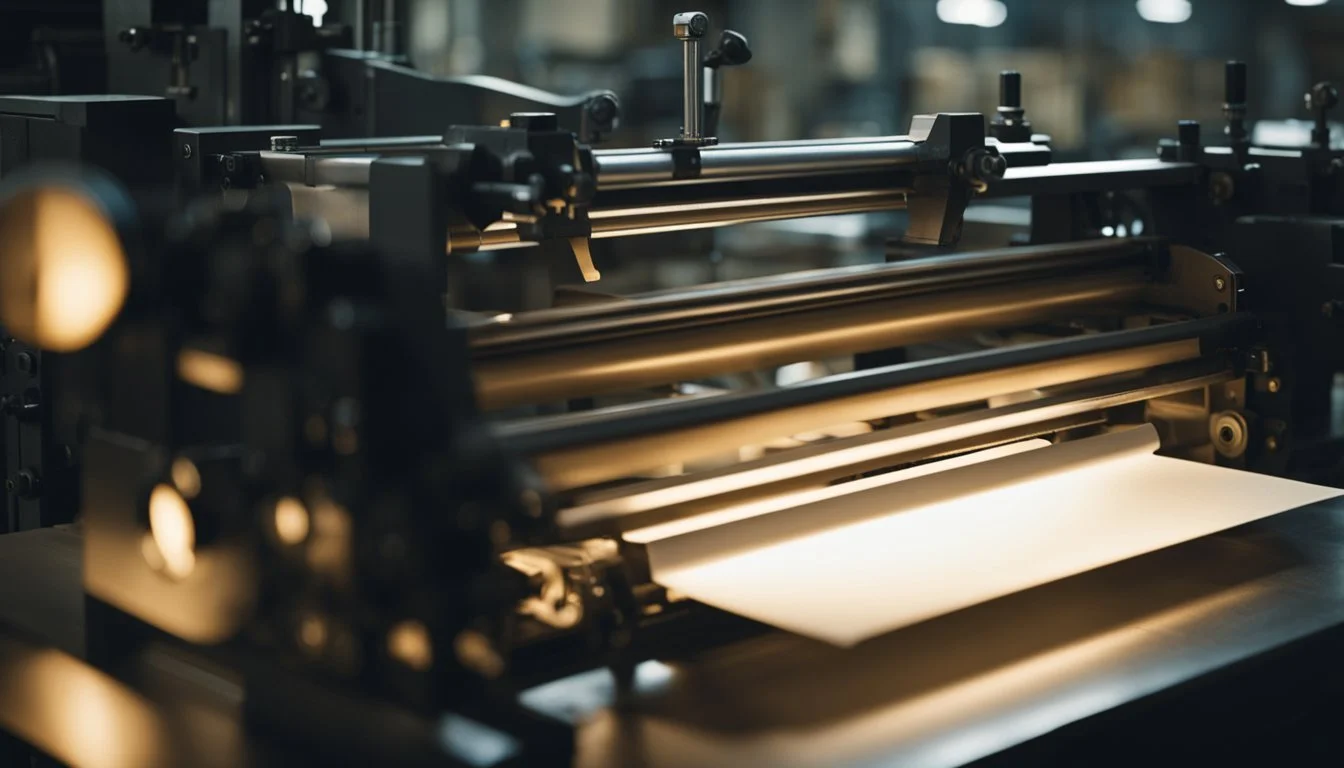3 Eye-Opening Films on the Invention of the Printing Press
Exploring the Revolution in Information Dissemination
The invention of the printing press revolutionized the spread of information and knowledge across the world. This groundbreaking technology, developed by Johannes Gutenberg in the 15th century, enabled the mass production of books and other printed materials. The printing press dramatically accelerated literacy rates and democratized access to information, shaping the course of human history.
Films have explored the profound impact of the printing press through various lenses. From historical dramas to modern narratives, these movies showcase the power of the written word and its ability to transform societies. By examining three thought-provoking films centered around the printing press, viewers can gain a deeper appreciation for this pivotal invention and its lasting effects on human communication and culture.
1) Gutenberg (2005)
"Gutenberg" is a German historical drama that explores the life of Johannes Gutenberg, the inventor of movable type printing. The film portrays Gutenberg's struggles and triumphs as he develops his revolutionary printing press in 15th century Mainz.
Director Gernot Roll brings to life the political and religious tensions of the era. The movie depicts Gutenberg's conflicts with local authorities and the Catholic Church as he pursues his vision of mass-producing books.
Bruno Ganz delivers a compelling performance as the determined inventor. The film showcases the technical aspects of Gutenberg's printing process, demonstrating how it transformed the spread of knowledge in Europe.
"Gutenberg" highlights the far-reaching impact of the printing press on literacy, education, and the dissemination of ideas. It offers viewers a glimpse into a pivotal moment in history that shaped the modern world.
2) Pressing On: The Letterpress Film (2017)
Pressing On: The Letterpress Film explores the enduring legacy of letterpress printing in the digital age. Directed by Erin Beckloff and Andrew P. Quinn, this documentary showcases the passion and dedication of those keeping this traditional craft alive.
The film features interviews with various letterpress practitioners, from seasoned veterans to young enthusiasts. It delves into the history of the 500-year-old printing process and its significance in shaping modern communication.
Pressing On highlights the unique qualities of letterpress printing, including its tactile nature and the craftsmanship involved. The documentary also examines the challenges faced by letterpress printers in a world dominated by digital technology.
The film captures the efforts of individuals and organizations working to preserve letterpress printing techniques. It showcases notable establishments like Hatch Show Print, which has been operating since 1879.
Pressing On: The Letterpress Film serves as both a celebration of this historic craft and a call to action for its preservation. It offers viewers a glimpse into the world of letterpress printing and the dedicated individuals who continue to practice this art form.
For more information, visit IMDb.
3) Print the Legend (2014)
Print the Legend chronicles the rise of 3D printing technology and the companies at the forefront of this innovation. The documentary focuses on startup companies MakerBot and Formlabs, as well as established players like Stratasys and 3D Systems.
The film explores the challenges and triumphs of entrepreneurs in the 3D printing industry. It provides an inside look at the race for market leadership and the potential impact of this technology on manufacturing and everyday life.
Directed by Luis Lopez and Clay Tweel, Print the Legend examines the personal stories behind the business competition. The documentary highlights key figures in the industry, including Bre Pettis, CEO of MakerBot.
The film also touches on controversial aspects of 3D printing, such as the potential for creating firearms. It raises questions about the societal implications of this rapidly advancing technology.
Print the Legend offers viewers a glimpse into the "Macintosh Moment" of the 3D printing revolution. It showcases the innovative spirit and determination required to bring new technology to market.
For more information, visit IMDb.
Historical Context of the Printing Press
The printing press revolutionized information sharing and literacy in the 15th century. Its development built upon earlier innovations and had far-reaching impacts on society and knowledge dissemination.
Origins and Early Innovations
Block printing emerged in China before 868 AD, using wooden panels to reproduce text. In Korea, movable metal type was developed in the 14th century. Johannes Gutenberg introduced mechanical movable type printing to Europe around 1440 in Mainz, Germany.
Gutenberg's press used individual metal letters that could be rearranged to form different pages. This allowed for faster, cheaper book production compared to handwritten manuscripts. His famous 42-line Bible, completed in 1455, demonstrated the press's capabilities.
Impact on Society and Knowledge Dissemination
The printing press dramatically increased access to written materials. Books became more affordable and widely available, spurring literacy growth. Standardized texts improved educational consistency.
Scientific and religious ideas spread more rapidly. Martin Luther's 95 Theses, printed in 1517, quickly circulated across Europe. Printed pamphlets and newspapers emerged as new forms of mass communication.
The technology fostered the exchange of knowledge across borders. It contributed to the Renaissance, Reformation, and Scientific Revolution by enabling broader dissemination of ideas.
Technological Advances Depicted in Films
Films about the invention of the printing press often showcase key technological breakthroughs and cultural changes. The mechanical innovations revolutionized information dissemination, while societal shifts reshaped the intellectual landscape of Europe.
Mechanical Developments
The movable type system stands out as the centerpiece in films about Gutenberg's invention. This innovation allowed for mass production of printed materials. Movies often depict the creation of metal letter molds and the assembly of type blocks.
The printing press itself features prominently, with its complex system of levers, screws, and plates. Films showcase the press in action, demonstrating how it applied even pressure to transfer ink onto paper.
Ink formulation receives attention in some productions. The development of oil-based ink that adhered well to metal type is portrayed as a crucial breakthrough.
Paper manufacturing techniques are sometimes highlighted. The transition from expensive parchment to more affordable paper is shown as key to making printed books widely accessible.
Cultural Shifts
Films often portray the initial resistance to printed books from scribes and religious authorities. This conflict illustrates the disruption of established power structures.
The democratization of knowledge is a common theme. Movies depict how printed books made information more widely available, breaking the monopoly of the educated elite.
The standardization of language and spelling is sometimes featured. Films show how printed texts helped establish consistent written forms, aiding in the development of national languages.
The rise of literacy rates is frequently depicted. Movies illustrate how the availability of printed materials encouraged more people to learn to read, transforming society.
Scientific advancement is often linked to the printing press in these films. The rapid spread of new ideas and discoveries is shown as a direct result of printed publications.


